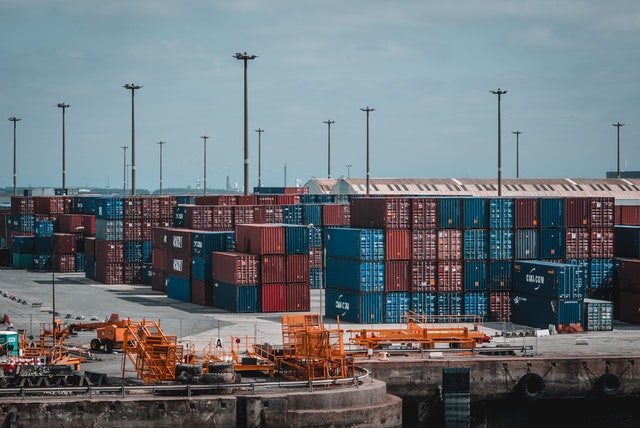On Oct. 24, 2016, Utah Governor Gary R Herbert, announced to more than 450 business leaders at the Utah Global Forum the creation of an exploratory committee to assess the development of an inland port in Utah.
Just prior to Herbert’s announcement, a study commissioned by World Trade Center Utah (WTC Utah) and Zions Bank, produced by Kem C Gardener Policy Institute, had confirmed that Utah had all the necessary ingredients for a highly lucrative inland port.
Inland Port

An inland port, sometimes called a dry port, is an inland intermodal terminal directly connected by road or rail to a seaport and operating as a center for transshipment of sea cargo to inland destinations.
Dry ports have been built in places like Kansas City and Greenville, South Carolina. These created shipping hubs where cargo containers are processed, stored, and transferred on trucks and railcars.
These hubs were also a big draw for manufacturers to move operations to the states where they are located. In 2016, inland port markets represented six of the top ten fastest-growing industrial markets in the nation. Along with Kansas City and Greenville, other cities that were successfully operating inland ports were; the Inland Empire Region, which is a metropolitan area and region in Southern California, inland of and adjacent to Los Angeles, Dallas/ Fort Worth, Atlanta, and Philadelphia.
Inland ports account for more than half of the fastest-growing industrial markets in the U.S. because they are key weigh stations in the national ecommerce distribution network.
Why Utah
The question of why or if a certain area is right for an inland port is what the commission and the studies set out to define when Governor Herbert created the exploratory committee.
Salt Lake City is about 800 miles from the sea, and business leaders contend that it is a natural site for an inland port.
The city is ripe for an inland port due to its proximity to several major interstate highways, the international airport, and a major railway freight terminal run by the Union Pacific Railroad.
Because of the ideal logistical setup, business leaders strongly believe that setting up a major shipping gateway in Utah could make it easier to export goods and materials abroad as well as attracting manufacturers to the state.
What Will The Port Do For Utah?

Utah has a strong economy and thriving workforce, so business leaders believe that those factors, combined with an inland port, would elevate Utah as a global business destination, act as a logistics center for the entire Western US and attract more international companies to relocate to Utah.
According to the Inland Port Authority, established in 2018, an inland port has the potential to raise the state’s economy by hundreds of millions of dollars. It will achieve this by creating thousands of local jobs and presenting tax incentives for new companies.
In August of 2019, the city council voted unanimously to grant a $28 million dollar tax break for inland port development.
More jobs, more manufacturers, more of a national presence in the global economy, the business leaders see that an inland port will bring quite a bit to the economy of Utah.
On Shipping And Fulfillment
In Utah, the inland port will be built upon existing transportation infrastructure and this global trade port will serve as a cost-effective distribution hub.
As for the effect on shipping and fulfillment, business leaders see a lot of positives in these areas with an inland port. Some of those positives are:
- Reduction in inefficiencies due to the combination of transportation modes.
- Being located near a large metropolitan area means a good supply of local workers so operations will always have the manpower to continue seamlessly. This ensures there is no lag in the distribution process or supply chain.
- Time-sensitive goods will spend less time at seaports, therefore, improving throughput and fulfillment rates.
- Lower energy consumption with less waiting and idling time.
- An increase in speed to end customers.
- More chances for international distribution and connection.
- A larger global manufacturing connection.
In 2018 the Inland Port Authority was given jurisdiction over 16,147 acres of land in the Northwest quadrant of Salt Lake City.
Those in the know say an inland port is perfect for Utah, attracting jobs, manufacturers, putting money in the state’s coffers, and bringing the state some global recognition. The distribution of seaport cargo would increase and simplify. The opportunity for more businesses to grow and new ones to be created is basically boundless. Having the chance to process and distribute international goods and materials could be a huge game-changer for Utah.
As for now, the development of an inland port is still in its early stages but that doesn’t quell the excitement of what could be possible for the future of Utah.




